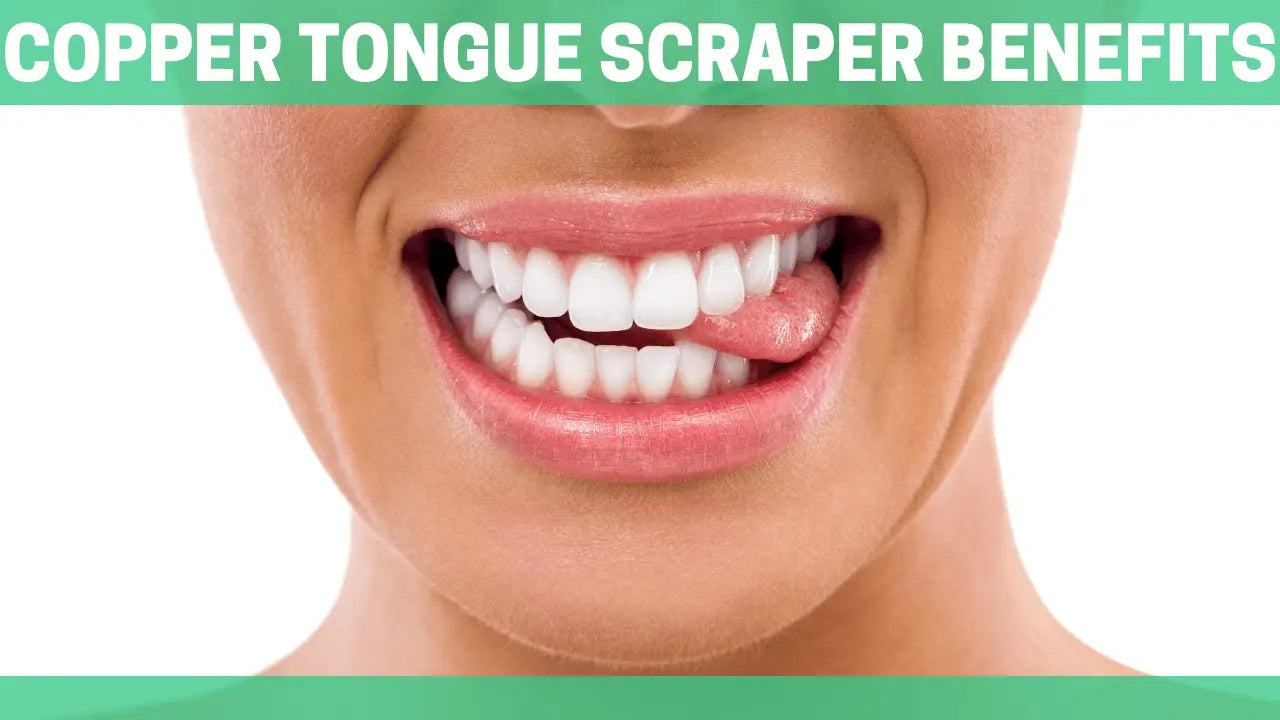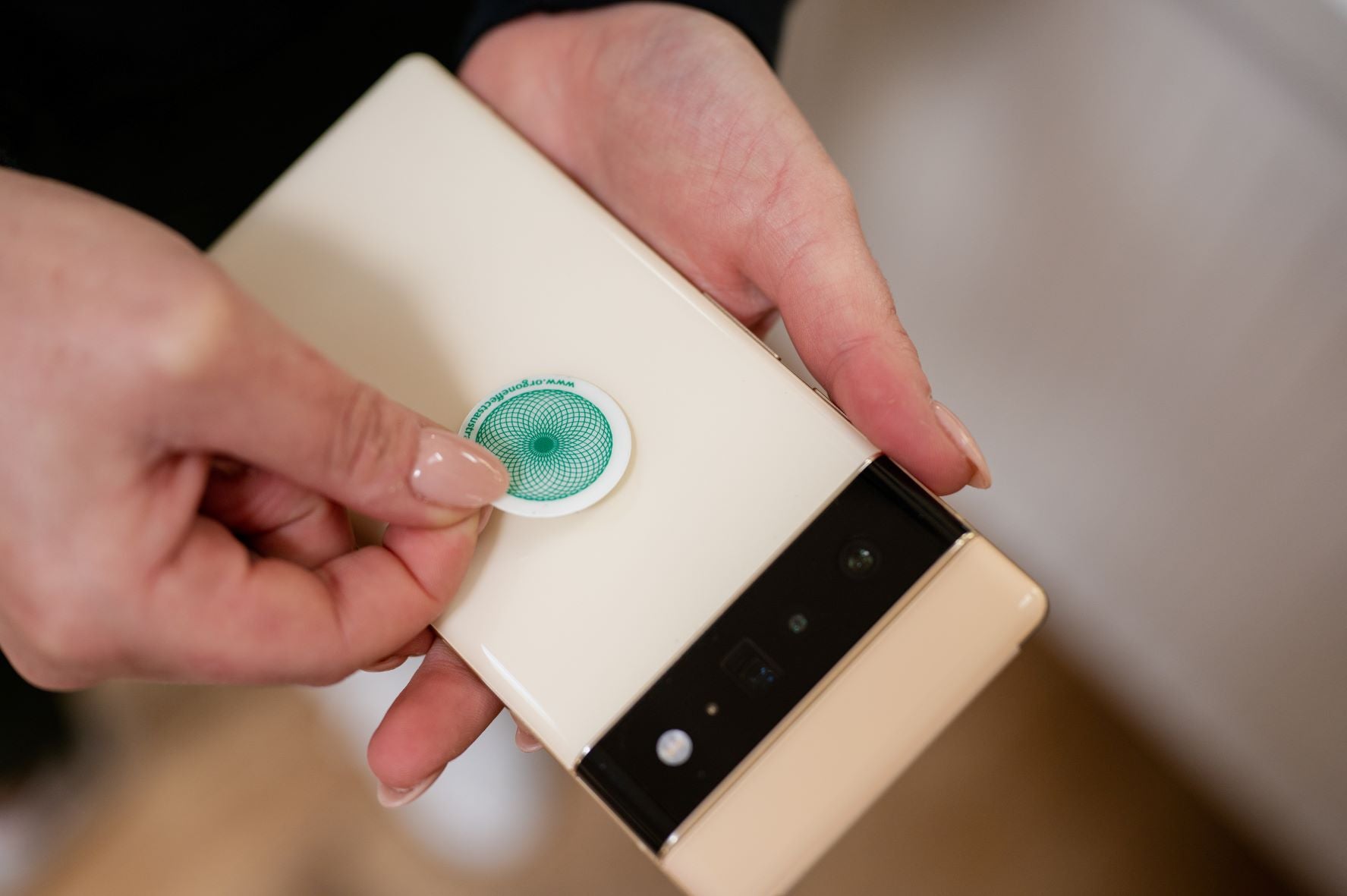Tongue cleaning is an ancient practice that has its roots in Indian Ayurvedic literature. Recommended by Ayurveda and now backed by medical science, scraping your tongue in the morning is the most effective way to eliminate bacteria that build-up on the top of your tongue each night. The curved and blunt edge of the tongue scraper is specifically designed for this purpose, removing twice the germ load of a toothbrush. Regular tongue scraping is the ideal way to prevent halitosis, bad breath, and to eliminate toxins before they can be absorbed into the system.
Tongue scraping can improve digestion and the sense of taste. Massaging the tongue stimulates and awakens the digestive system while removing toxins from the system. So if you’re looking for a tongue scraper and want to know the best way to use it to get rid of bad breath and remove bacteria, we are here to help answer these questions and more in our complete tongue cleaning guide for your oral health.
Should You Clean Your Tongue?
The tongue scraping concept is relatively new in the United States but has been practiced in many cultures for centuries, and 39 percent of people worldwide already brush their tongues regularly. Tongue scraping is a little different from brushing your teeth, however, and it probably isn’t something your dentist recommended. Flossing and brushing your teeth twice a day is probably among their top oral health priorities. However, start incorporating tongue-scraping into your daily oral hygiene routine, and you may notice several benefits.
The purpose of this device is to scrape off tongue debris, the accumulation of debris, bacteria, and dead cells that constantly build up and are typically bad for your health and can even affect your taste. This coating on the tongue can be made worse by several factors, including:
- Certain medications
- Smoking
- Dry mouth
- Inadequate oral care
- Oral thrush
Bacteria that build-up on the tongue can form plaque, which invariably contributes to gum disease, tooth decay, bad breath, and overall poor health. According to a 2014 study, tongue scraping was found to reduce the number of bacteria in the coating, although it does not inhibit plaque formation. Therefore, the study concluded that tongue scraping should be done in conjunction with tooth brushing to reduce the number of bacteria in the mouth.
Benefits of Tongue Scraping
Research on the benefits is still fairly limited, but scraping at least twice a day could help improve any of the following:
- Bad breath: Food particles and bacteria embedded in the tongue’s crevices are one of the principal causes of bad breath. Cleaning food and bacteria will make your mouth feel a lot fresher.
- Appearance: A thick, white mass on the tongue looks and feels uncomfortable. Use a tongue scraper and be sure to drink plenty of water.
- Sense of Taste: A physical coating on your taste buds could prevent you from feeling the full flavor of the food you consume.
- Overall oral health: A clean tongue guarantees fewer bacteria in your mouth, which can help slow the progression of tooth decay and gum disease.
If you think you have chronic bad breath (halitosis) or your tongue is discolored or sore, you should see your dentist for an exam and find out how you can improve it.

How Do You Tongue Brush with a Tongue Scraper?
The ideal way to clean your tongue to remove bacteria and improve bad breath is to scrape your tongue by following these simple steps:
- Hold both ends of the tongue scraper with both hands.
- Stick out your tongue and place the tongue scraper at the back of your tongue.
- Gently pull the scraper forward. Be sure to cover the entire tongue to remove the unwanted coating.
- Rinse the tongue scraper under running water.
Repeat this process 5 to 7 times or until no layer remains. Scrape your tongue gently or you could damage the tissues.

How Often Should You Use Tongue Scrapers?
Now that you know how to use a tongue scraper to improve bad breath and remove bacteria, it is easy to add it to your daily oral hygiene routine. The entire process should take less than a minute. You can clean the tongue twice a day while brushing your teeth. But, in fact, you can scrape your tongue more often. People who are particularly conscious of the bacteria that cause bad breath can scrape their tongue after smoking, drinking coffee, or eating strong-smelling foods, for example.
Please note that you should not rinse your mouth with mouthwash or water after brushing your teeth. This removes the beneficial ingredients from your toothpaste. If you prefer to rinse your mouth after scraping, do so before, not after brushing your teeth.
If you’re having trouble gagging while cleaning the back of your tongue, you are not alone. Once you get used to the sensation of scraping your tongue, you may find it easier to place the scraper further into your mouth without gagging. Some people prefer a heavier tongue scraper to a lighter plastic scraper because they find it’s less likely to trigger their gag reflex.
Do you Use a Tongue Scraper Before or After Brushing?
You should scrape the tongue once per day, and most experts recommend doing it after brushing and flossing, either in the morning or at night.
Conclusion
Although not widely used or recommended in the United States, and probably not essential depending on your dentist, the tongue scraper’s many benefits, including removing bacteria and relieving bad breath, make it a great interesting addition to your daily oral care routine.
We advise you to use a tongue scraper instead of a toothbrush and experiment with different styles if you don’t like the first one you use. The flatter it is against your tongue, the easier it will be to scrape your tongue gagging, particularly the back of your tongue.
Remember that you should always brush your teeth twice a day and clean between your teeth every day if you want to keep your mouth in tip-top shape. Regular checkups with your dentist will help identify more serious problems with your teeth, tongue, or gums.



